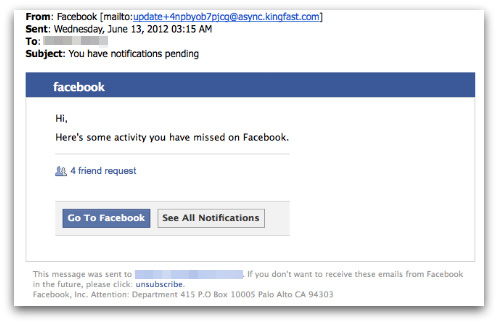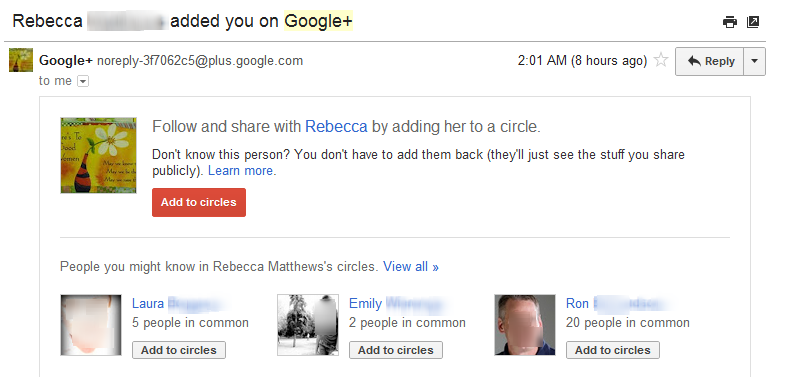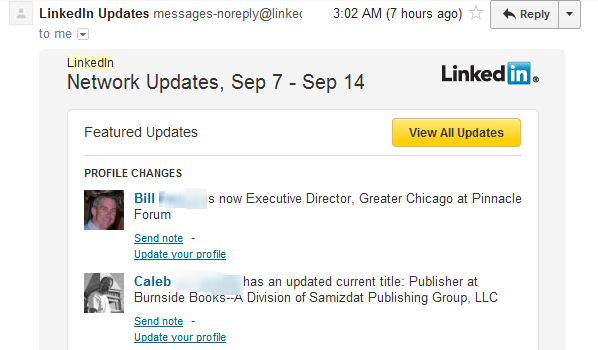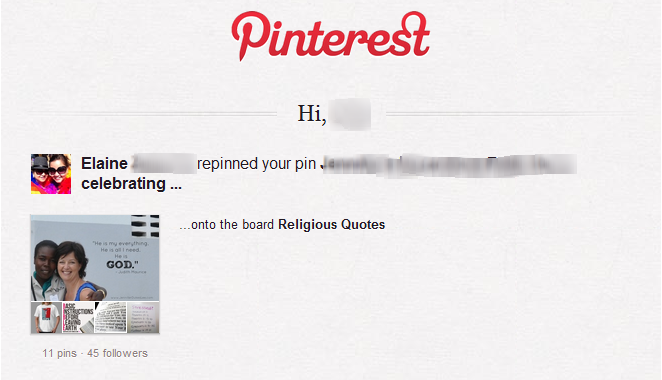“A Battle of Two Blogs: Obama v. Romney” plus 1 more |  |
| A Battle of Two Blogs: Obama v. Romney Posted: 08 Oct 2012 01:07 PM PDT This guest post is by Andrew Bart. Now that both U.S. political parties have concluded the respective coronations of their chosen candidates, it’s time for them to head into real battle in the weeks leading up to the November 6 election. What tools are both candidates arming themselves with to sway voters in the upcoming weeks? Both the Romney and Obama campaigns have gotten noticed for their TV and web advertising response speeds, their social media capabilities, and even a new iPhone app that can track a voter’s preferences in the weeks leading up to election day. But today, we will look into the blogs of both candidates, to expose weaknesses, applaud strengths, and see what we can learn and apply on our own blogs. The power of the blogIndeed, both candidates are using social media to campaign like no politicians before, with some calling this “The social media election.” But how are the blog posts being used to feed into the social media information pool? Are the teams behind the blogs using the blogging forum effectively to help change voters’ minds? The campaign blogs for both candidates may turn out to be a critical factor in the election. Blogging is where both candidates can create campaign excitement, promote voter encouragement, and occasionally even lay out specific steps they believe will help the U.S. in the coming years. With a variety of bloggers for both campaigns working presumably on-the-fly using mobile devices, which are hosted through VPS hosting sites, each candidate’s blog is filling daily with a mix of editorial and promotional content. Obama’s blogOn the Obama 2012 blog, content seems to fall into several categories:
Scrolling through Obama’s blog, one feels more that the bloggers are focused more on filling the pipeline with fresh content, and less on attempting to educate voters on the differences in strategies that make the incumbent a better choice for a second term. To be fair, there is an extensive section called “Get the Facts” used for heavier analysis on topics of jobs, economy, national security, health care, and so on. But what the blog doesn’t seem to do is link to these positioning statements to points made on the blog in daily posts, which could be a good way to drive readers to understand the issues more fully. Romney’s blogOn the Mitt Romney blog, the Republican candidate’s team uses a banner across the top asking readers to see the candidate’s five-point plan to help the middle class, while linking to a daily blog post and archived items below. Some of the posts concern how volunteers from across the country are working with local citizens’ groups to get the word out, and how teams are canvassing voter opportunities. But the Romney team continues to post about the inarticulate goals of the Obama presidency, and uses the blog to get across fighting points about the current administration’s efforts to manage the nation and the economy. In this sense, the Romney campaign is doing the right thing at its blog, pushing its core campaign points across the digital platform to a point where the social-media team can work those messages across various social networks. Your own “party” platformAs Problogger.net readers know, using the power of words and images to create stirring blog posts that spark passion and action among readers remains our central focus. How can you use some of the political candidates’ blogging tactics to bring about a change in your own blogging?
The ideal for both U.S. presidential candidates’ campaigns should be to use their respective blogs as provocateurs of political action, insights, and platform consistencies—not partisan bickering. The candidates’ blogs should outline detailed platform strategies backed up by evidence and data. The blogs should not fill voters’ minds with venomous rhetoric aimed at the opposition, but should rather provide a source for valuable information leading Americans to make an informed decision in November. The same should apply to not only apply to pundits, but to anyone with a politically charged blog. There is a time and place to editorialize, and blogs are the perfect outlet for opinion-based writing. But good editorial journalism is backed with stats, facts and well-thought-out theories. Bloggers should heed this advice and not skew opinions based on unwarranted rhetoric. A well-informed public is the strongest part of a democratic society. With a diverse career that initiated over a decade ago at iCrossing, a global digital agency that sold for over $325 million in June of 2010 to Hearst Corporation, Andrew Bart has a deep-rooted understanding of innovative Internet marketing solutions. To learn more about Andrew, connect with him on LinkedIn,Google+, and Twitter. Originally at: Blog Tips at ProBlogger A Battle of Two Blogs: Obama v. Romney |
| 5 Email Engagement Lessons from the Big Social Networks Posted: 08 Oct 2012 07:09 AM PDT This guest post is by Lior Levin. Email remains one of the best ways to increase the reach of your blog and to increase engagement with your readers, since it requires a choice to opt in and is delivered directly to inboxes. But if you abuse or misuse email while trying to reach your blog readers, it could become a liability, hurting your business in the process. Increasing the effectiveness of your blog using email demands the development of time-tested strategies. Social networking sites such as Facebook and Twitter send a significant amount of email to their users, and by examining their strategies and formats, you can learn a great deal about using email to reach your blog readers. Twitter's email strategyTwitter's "digest" email is a relatively recent innovation that provides a list of the most important tweets from your followers. This digest focuses on helping users find the content that is most popular, but that might have been missed given the immediacy of Twitter. Bloggers can use their email lists in a similar way to highlight the best content on their sites, recognizing that even their most loyal fans can't catch every single post. From the posts that are shared the most, to the posts with the most comments, keep track of what visitors to your blog find most intriguing. Then, use your email list to keep the conversation going and build stronger reader relationships. Facebook's email strategyIf you don't manage your emails from Facebook, your inbox will soon be overtaken by them. However, there is quite a bit that bloggers can learn from this network’s strategy. For instance, Facebook's email messages are short and to the point, only giving the most important information, which is usually a link to click on. If you want to maximize the impact of your blog marketing, do the same with your emails. Either provide a few key links to your blog that can be clicked or, better yet, provide one simple action item as the focus of your email message. The more simple and focused your emails, the more likely recipients will visit your blog. Facebook users can also customize their emails by selecting the exact events and updates they want to be alerted to, and will only receive related emails. This ability to customize what you receive and when is an important lesson for promoting a blog through email marketing. Email marketing tools like Mailchimp can be integrated into a blog and blog visitors can both sign up to receive email updates and customize how often they'll receive updates from your site. For example, some visitors will want daily updates so they can be the first to comment or to jump on your limited-time offers. Others will only want a weekly digest of your blog posts. Either way, you'll keep your subscribers happy and engaged by providing customized ways for them to stay informed about your blog. For bloggers hoping to increase engagement, Facebook showcases the importance of letting users choose what they want and finding important information on their own timetable. Similarly, providing your blog’s subscribers with the ability to customize emails makes it easy to take advantage of market segmentation and ensures your visitors stay happy and engaged without becoming inundated with email. Google+'s email strategyMuch like Twitter, Google+ sends a weekly digest email. However, it goes one step further by recommending new users to follow and, most importantly, offers the ability to add them to your circles within the email. In other words, Google+ uses the email itself to drive user engagement rather than relying on a clickthrough to the network itself. In short, there's no reason to force subscribers to click through to your site to engage with your blog, since much of what they do at your blog can be just as easily done in the email itself. You can:
This ensures that recipients have one simple action step rather than being forced to click through to your blog every time they want to do something. LinkedIn's email strategyLinkedIn is another social networking site that sends a large number of emails, and allows users to customize the messages they receive. One of the specialties of LinkedIn, however, is giving customers information beyond what they specify in their settings.
LinkedIn emails show users new suggested contacts, job opportunities, and other connections that may be worth making. However, users can always change their email settings to a weekly digest or disable the emails completely if they like. This is a service that almost any blogger can provide if they properly segment their audience and know what their subscribers want to receive each week. For example, a blogger who writes about creativity may have writers, graphic designers, and musicians reading her site. Her email list should be broken into those three segments so that she can more effectively reach those interest groups with special offers, content, and new products. LinkedIn teaches bloggers that they need to know their audience well, and proactively reach out to them based on their interests. Pinterest's email strategyLastly, Pinterest's emails are profoundly visual in nature, and presented more like a large sign than a block of text. While the visual benefits of Pinterest are nothing new, it is a good reminder for bloggers that increasing engagement through email requires using visual tools in addition to text. If Pinterest is growing through image-based content, bloggers should explore that strategy as well. Pinteret's emails are a good example of tying email marketing in with other elements of your online presence, in particular the images on your blog. As you prepare your blog posts, scan them for brief, valuable insights that can be adapted to fit in an image. Images in blog posts are incredibly useful for SEO and social media sharing, but they can also be integrated with posts in your email updates. An image will break up an email and draw readers into your post's content. In addition, the image itself is something that can be pinned on Pinterest, increasing your blog's social reach through email itself. What can you learn from social media email strategies?There's no reason why your email marketing plans for your blog can't gain some lessons from social networks that have long specialized in effectively using email. It's just a matter of forming a good plan and then finding the time and energy to get it done. Here are the five key lessons from each social network for bloggers using email:
After all, there's no real secret to good email marketing. It's all about investing the resources needed to make it happen, and that comes from watching what others are doing and making email a priority. What have you learned about email marketing from social media websites—or others in your niche? Share your tips with us in the comments. This guest post was sent to us by Lior Levin, a marketing consultant for a shopping cart abandonment company and who also advises Producteev, a to do list Start-Up. Originally at: Blog Tips at ProBlogger 5 Email Engagement Lessons from the Big Social Networks |
| You are subscribed to email updates from @ProBlogger To stop receiving these emails, you may unsubscribe now. | Email delivery powered by Google |
| Google Inc., 20 West Kinzie, Chicago IL USA 60610 | |












.jpg)
0 comments:
Post a Comment